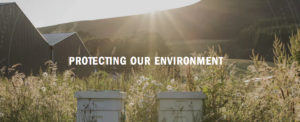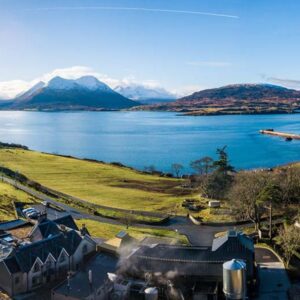World Wildlife Day
At the end of 2020, the SWA (Scotch Whisky Association) launched their vision for the future of the Scotch whisky industry, a future that is more sustainable and eco-friendly, where distilleries give back to their local environment and our planet as a whole.
Here at SWE, we love to champion our friends and all their hard work! So to celebrate World Wildlife Day on March 3rd, we thought we’d take a look at some Scotch whisky distilleries that have made it part of their mission to protect, reintroduce and enhance Scotland’s wildlife.


Glengoyne Distillery
At the Glengoyne distillery, they are using their beautiful natural surroundings to create a symbiotic relationship between the distilling process and their wetlands.
After distillation, the liquid which is not needed (spent lees) is treated in their wetlands, where it makes its way through a series of twelve pools; each is thick with reed beds. This slows down the flow and removes anything that would harm the delicate balance of the local burn. The water is then safe to re-join the burn, which winds its way into the river and on to Loch Lomond. Less waste. Less energy. More wildlife.
The wetlands are excellent for biodiversity too. They are home to around 14,500 plants of 20 varieties – attracting songbirds, dragonflies and lots of other wildlife. It doesn’t stop there, Glengoyne are also partners of the Wildfowl and Wetlands Trust (WWT) and the distillery is also home to bee hives supporting the charity Plan Bee.
Read their full story here!

Raasay Distillery
Raasay Distillery is nestled on the remote Isle of Raasay, off the wild western Scottish coast. The island is home to sea eagles, red roe dear and a sub-species of bank vole.
In 2021 they partnered with James Armour, “The Selkie” to support the ‘Selkie challenge”. James became the first person to run, swim and cycle the length of the Outer Hebrides in aid of the Hebridean Whale and Dolphin Trust. The ‘Selkie’ were mythological Celtic and Norse seal-folk that could shed their seal skin to come on to land in human form.
Read more about their sustainable projects by clicking here.

Glen Scotia Distillery
At Glen Scotia 28 tonnes of malted barley is used per week, which results in the creation of 28 tonnes of draff. Draff (a by-product of the whisky making process) contains no alcohol and is a highly nutritious food stuff that makes the local cattle very happy!
When you visit the distillery you’ll see that the maturing casks slumber to the buzz of 100,00 happy bees, adopted by Glen Scotia in association with the Scottish beekeepers at Plan Bee – an eco-innovation business that offers beehive adoption, management and educational services. A visit to the Kintyre peninsula will treat you to a sight of stunning protected costal wildflowers enjoying the visit of the odd Glen Scotia bee!
Discover more about their eco-friendly ways here

Glenmorangie Distillery
Working with the Marine Conservation Society & Heriot Watt University, native European oysters have been returned to the Dornoch Firth following their extinction from the area. Together, the partners created Dornoch Environmental Enhancement Project, and the very apt acronym DEEP, was formed. The objective was to research and improve the water quality and biodiversity in the firth.
Glenmorangie didn’t stop at protecting their local environment, they have also teamed with Edinburgh Zoo! Numbers of giraffes have fallen almost 30% in just 30 years, and some populations are now critically endangered. Glenmorangie has forged a conservation partnership with the Royal Zoological Society of Scotland (RZSS) and Giraffe Conservation Foundation (GCF) to protect giraffes in the wild and provide a habitat for the animals at Edinburgh Zoo.
Find their full story here!